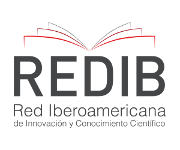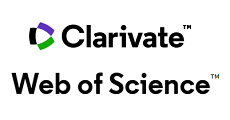UN-SEEGSI: un sistema inteligente de información gerencial con aprendizaje dual: hombre-maquina
DOI:
https://doi.org/10.15446/ing.investig.n30.20817Keywords:
Auditoría informática, Sistemas de información, Reingeniería, Proyecto EIDOS, Inteligencia artificial (es)Computer audit, Information systems, Reengineering, EIDOS Project, Artificial Intelligence (en)
Downloads
Ha llegado a su madurez la V Generación y con ello sus expresiones: la inteligencia artificial los sistemas con el apoyo de conocimientos y la ingeniería de software. En Colombia poca acogida parece tener. Es que los conocimientos constituyen un salto paradigmático hacia un nuevo orden mundial: el paso de la Sociedad de la Información a la Sociedad del Conocimiento. No es difícil de colegir la implicación de nuevas generaciones de sistemas de información y aunque la inmensa mayoría de gerentes no quieren saber de nuevos lenguajes ni reprogramaciones, aquí describiremos cómo es posible desarrollar e implementar un sistema inteligente de información gerencial. El concepto de “inteligente” se refiere a la viabilidad de tener un determinado grado de autonomía decisional, un evidente mejor desempeño, una capacidad real de adaptarse a las condiciones particulares de un usuario, el reconocer y generar un plan de trabajo al ejecutivo y en especial por el soporte a las decisiones, lo cual no significa la posibilidad de “reemplazar” al ejecutivo en esta labor, sino por el contrario constituirse en un sistema asistente del ejecutivo. Una innovación en esta arquitectura la constituye la tutoría experta en línea, que constituye un espacio para posibilitar el “entrenamiento gerencial” in situ y además la incorporación de técnicas de aprendizaje maquinal que funcionen en la práctica. Lo anterior significa que UN-SEEGSI pretende ser un ambiente de aprendizaje dual: donde se debe dar un aprendizaje vivencial por parte del usuario y donde debe aprender la máquina en forma subrepticia.
References
Hendler, James. “AI in the twenty first Century”, IEEE EXPERT: Intelligent, Systems and Applications. Doc., 1993.
Shank, Roger. “Where is the AI?”. AI Magazine. AAAI Doc., 1993.
Mukanata, Toshimon. “Practical AI: Where it’s been and where is now”, Cleveland State University. IEEE EXPERT: Intelligent Systems and their Applications. Febrero 1993.
Lowry, Michael. “Software Engineering in the Twenty Century”. AI Magazine. The AAAI Fall, 1992.
Davis, Bordon y M. Olshon (1986). Sistemas de Información Gerencial. Ed. McGraw-Hill latinoamericana, traducción al español por Alfonso Pérez Gama.
Arnold, R. Software Reengineering. IEEE Publications, 1933.
“Systems Re-Engineering: a critical perspective” in CASE Trends, julio-agosto, 1990.
Una completa descripción del modelo metodológico de Bachman se encuentra presentada en su artículo titulado “A personal chronicle: Creating Better Information Systems, with Some Guiding Principles”, publicado en la revista IEEE Transactions on Knowledge and Data Engineering. Vol. 1, No. 1 de marzo de 1989. DOI: https://doi.org/10.1109/69.43401
Blanning, R. & D. King. Current Research in Decision Support Technology, IEEE Computer Society, 1993.
Blanning, R. D. King. “Introduction to Growth of Decision Support Technology” in Current Research in Decision Support Technology, IEEE Computer Society Press, pp. 1-8.
Soler, Carlos Eduardo. “Razonamiento Decisional”. Tesis en Publicación —Proyecto EIDOS—, Universidad Nacional, 1993.
Cardona, German y Diaz, Claudia. UN-ADTutor Prototipo de un sistema tutorial inteligente para la Abstracción de Datos y Objetos. Dpto. Ing. Sistemas —Proyecto EIDOS—, Universidad Nacional, 1992 Tesis.
Huber, G. P.: “Cognitive style as a basis for MIB and Decision Support designs: Much ADO About nothing?" Management Science, August, 1983. DOI: https://doi.org/10.1287/mnsc.29.5.567
“Exploring Active Decision Support: The JANUS Project”, S. A. Raghavan y D. R. Chand. Bentley College, Waltham Mass in Current Research in Decision Support Technology, R. W. Blanning & D. R. King EEE Computer Society Press, 1992, pp. 134-136.
Véase el No. 1 del Vol. 2 de IEEE Knowledge and Data Engineering, March 1990, el cual está dedicado a la nueva generación de Bases de Datos, presentando diferentes prototipos, ISBN 1041-4347.
Gómez, César. UN-BID prototipo de una Base Inteligente de Datos, Tesis Universidad Nacional, Departamento de Ingeniería de Sistemas —Proyecto EIDOS—, Santafé de Bogotá, 1992.
Piatesky-Shapiro, Breg and William J, Frawley edts. Knowledge discovery in Databases, AAAI and MIT Press, 1992.
López, Fernando (1991). UN-AudiExp Un Sistema inteligente para Auditoria de Sistemas. Tesis Depto. de Ingeniería de Sistemas —Proyecto EIDOS-, Universidad Nacional de Colombia, Bogotá.
Alvarado, Javier y Manjarres, Carlos. Ingeniería de Conocimientos en Auditoria de Sistemas: Prototipo UN-AudiBC, de una Base de Conocimientos. Tesis Depto. Ingeniería de Sistemas —Proyecto EIDOS—, Universidad Nacional, 1993.
Rincón, Pedro. Planes de Contingencia: UNAudiPlan. Depto. Ing. de Sistemas —Proyecto EIDOS—, Universidad Nacional, 1993.
Diossa, Henry. UN-Fistutor: Prototipo de Tutor Experto para el Aprendizaje de Cinemática Unidimensional. Tesis, Depto. de Ingeniería de Sistemas —Proyecto EIDOS—, Universidad Nacional, 1992.
Rich, Elaine. User are individuals: Individualizing User Models, in IJJMMS, 1983, Vol. 18. DOI: https://doi.org/10.1016/S0020-7373(83)80007-8
Ammar, R.A. y T. L. Booth (1988). “Software optimization Using Users Models”, en IEEE Systems, Man and Cybernetics, vol. 18, No. 4, July/August, 1989. DOI: https://doi.org/10.1109/21.17373
Brajnik, B. y B. Guida, y C. Tassi (1990). “User Modeling in Export Man Machine Interfaces: A Case study in Intelligent Information Retrieval”, en IEEE Systems, Man and Cybernetics, Vol. 18, No. 4, July/August, 1989.
Pérez Gama, Alfonso. “Modelos computacionales para el desarrollo de la Inteligencia”. Expociencia 97. Programa Académico: Informática Inteligente. Nov. 1991, Santafé de Bogotá. En publicación Asociación Colombiana para el Avance de la Ciencia -ACAC-.
Fiskel, Joseph and Frederick, Hayes-Roth: “Knowledge Systems of Planning Support”. IEEE Expert: Intelligent Systems and their applications, Fall, 1989. DOI: https://doi.org/10.1109/64.43267
Véase Memorias de la IV Reunión de RIBIE en Porto Alegre, 1991.
Billmore, D. J., Self (1988). “The Application of Machine Learning to ITS” en AI and Human Learning, Edit. J. Self. Chapman & Hall Computing, London.
Pérez Gama, Alfonso (1984). “La Microcomputación Educativa como Ayuda al Aprendizaje” en Informática y Educación. Ed. A. Roquez, CEPE-UNESCO. Lima, Perú.
Dorfman, Raúl (1983). Del Jardín de infantes a los Sistemas de Información. Memorias Seminario-Taller, Universidad Nacional de Colombia, Bogotá.
Pérez, Alfonso y Medina, Víctor Hugo. Diseño de Sistemas y Re-ingeniería con el apoyo del computador: Herramientas CASE, 2a. Edición, Depto. Ing. Sistemas Universidad Nacional, 1993.
Rozo, Giovanni. Sistema Instruccional sobre Resolución General de Problemas. Tesis Departamento de Psicología y Depto. de Ingeniería de Sistemas —Proyecto EIDOS—, Universidad Nacional, 1993. En publicación.
Davis, R. (1985). “Problem Solution with Export Systems”. Proceedings of the Texas Instrument Artificial Intelligence Symposium, Dallas, TX, USA.
Téllez, Alfonso. UN-Metod SIG: Metodología para el desarrollo rápido de Sistemas de Información Gerencial en ambiente CASE. Depto. Ingeniería de Sistemas —Proyecto EIDOS—, Universidad Nacional, 1993.
How to Cite
APA
ACM
ACS
ABNT
Chicago
Harvard
IEEE
MLA
Turabian
Vancouver
Download Citation
CrossRef Cited-by
1. Alfonso Pérez Gama. (1997). De la reelaboración del conocimiento a la generación de conocimiento nuevo mediante edumática e inteligencia artificial. Ingeniería e Investigación, (36), p.18. https://doi.org/10.15446/ing.investig.n36.24830.
Dimensions
PlumX
Article abstract page views
Downloads
License
Copyright (c) 1993 Alfonso Pérez Gama

This work is licensed under a Creative Commons Attribution 4.0 International License.
The authors or holders of the copyright for each article hereby confer exclusive, limited and free authorization on the Universidad Nacional de Colombia's journal Ingeniería e Investigación concerning the aforementioned article which, once it has been evaluated and approved, will be submitted for publication, in line with the following items:
1. The version which has been corrected according to the evaluators' suggestions will be remitted and it will be made clear whether the aforementioned article is an unedited document regarding which the rights to be authorized are held and total responsibility will be assumed by the authors for the content of the work being submitted to Ingeniería e Investigación, the Universidad Nacional de Colombia and third-parties;
2. The authorization conferred on the journal will come into force from the date on which it is included in the respective volume and issue of Ingeniería e Investigación in the Open Journal Systems and on the journal's main page (https://revistas.unal.edu.co/index.php/ingeinv), as well as in different databases and indices in which the publication is indexed;
3. The authors authorize the Universidad Nacional de Colombia's journal Ingeniería e Investigación to publish the document in whatever required format (printed, digital, electronic or whatsoever known or yet to be discovered form) and authorize Ingeniería e Investigación to include the work in any indices and/or search engines deemed necessary for promoting its diffusion;
4. The authors accept that such authorization is given free of charge and they, therefore, waive any right to receive remuneration from the publication, distribution, public communication and any use whatsoever referred to in the terms of this authorization.




























